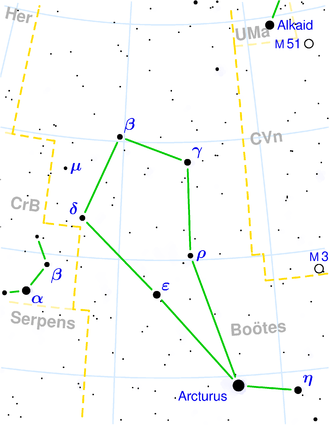NGC 5446
| Galaxy NGC 5438/5446 |
|
|---|---|

|
|
| SDSS recording | |
| AladinLite | |
| Constellation | Bear keeper |
|
Position equinox : J2000.0 , epoch : J2000.0 |
|
| Right ascension | 14 h 03 m 48.0 s |
| declination | + 09 ° 36 ′ 38 ″ |
| Appearance | |
| Morphological type | E-S0 |
| Brightness (visual) | 13.6 mag |
| Brightness (B-band) | 14.6 mag |
| Angular expansion | 0.8 ′ × 0.8 ′ |
| Surface brightness | 13.2 mag / arcmin² |
| Physical data | |
| Redshift | 0.023166 +/- 0.000087 |
| Radial velocity | 6945 +/- 26 km / s |
|
Stroke distance v rad / H 0 |
(310 ± 22) x 10 6 ly (95.1 ± 6.7) Mpc |
| history | |
| discovery | Wilhelm Herschel |
| Discovery date | March 19, 1784 |
| Catalog names | |
| NGC 5446, 5438 • PGC 50112 • CGCG 074-075 • MCG + 02-36-029 • GC 3759 • H III 57 • LDCE 1042 NED006 | |
NGC 5438 = NGC 5446 is a 14.3 mag bright, elliptical galaxy of the Hubble type E-S0 in the constellation Bear Keeper and 310 million light years from the Milky Way.
It was discovered on March 19, 1784 by Wilhelm Herschel with an 18.7-inch reflector telescope, who described it as "eF, S, verified with 240 power". A second discovery, together with the neighboring galaxies NGC 5436 and NGC 5437 , was made on June 28, 1883 by Wilhelm Tempel during a single observation. This led to a second entry in the catalog under NGC 5438 .
